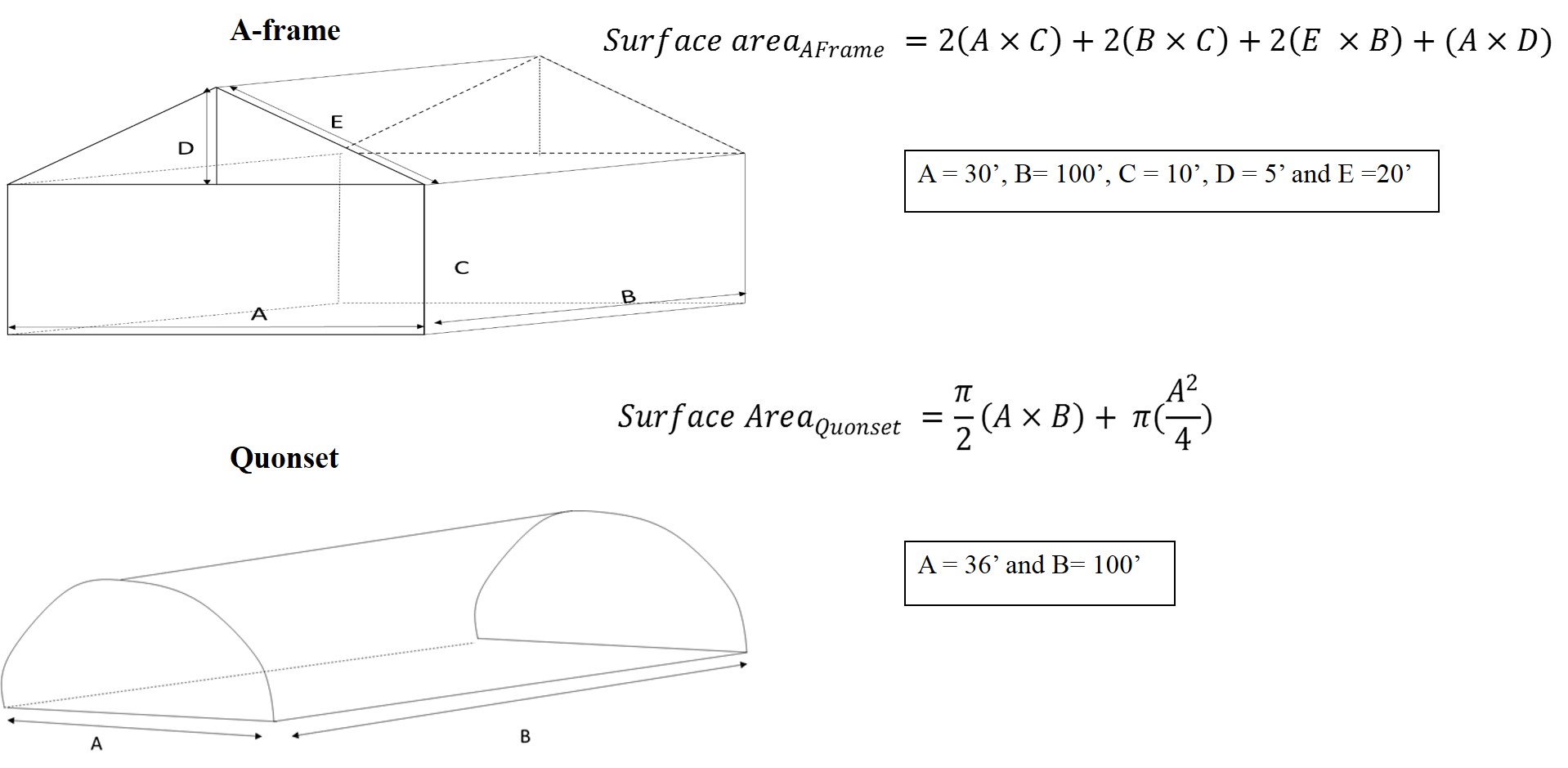Alex Miller† and Krishna Nemali††
† Graduate student, Horticulture and Landscape Architecture, Purdue University
†† For correspondence: knemali@purdue.edu
Winters in the mid-west are generally harsh. The daily average temperature during winter months (Nov. to Feb) in Indiana is 33.6 oF. This temperature is significantly lower than the optimal growth temperature (65 to 75 oF) for many crops. Thus, heating is essential to grow crops during winter in Indiana greenhouses. In this article we describe how to determine heating requirements for a greenhouse.
A common method of heating greenhouses involves maintaining air temperature at a target level for the crop. To calculate heat requirement (Q, BTU/hr) for maintaining a target air temperature inside a greenhouse, we need to know the (i) temperature difference or ΔT between inside and outside air, (ii) surface area or A of the greenhouse and (iii) overall heat transfer co-efficient or U of the greenhouse covering material. U-value indicates BTU/hr of heat lost through the material in the form of conduction and radiation from an area of one ft2 for every oF difference in temperature between inside and outside air (approximate value). From this information, heat needed to maintain desired temperature inside the greenhouse is calculated as follows:
Q = U x A x ΔT
Examples of surface area calculations for a Quonset and A-frame greenhouses is shown in Fig. 1 below:

Figure 1. Greenhouse structures used in Table 1 for heating calculations
In the above formula, π is 3.14, A, B, C, D and E are dimensions (see Fig. 1) of the structure.
We can calculate heating requirement (BTU/hr) for A-frame and Quonset structures shown in Fig. 1 when an air temperature of 70 oF is maintained for 16 h (light period) and a temperature of 60 oF is maintained for 8 h (dark period) or daily average air temperature of 66.6 oF {[(70 × 16 h) + (60 × 8 h)]/24} is maintained. Let’s assume outside air temperature is 30 oF during the 24 h period. We will also assume that the A-frame greenhouse is covered with double polycarbonate sheet and Quonset greenhouse is covered with a double polythene sheet. U-values for double polycarbonate and double polyethylene sheets are 0.55 and 0.70 BTU/hr ft2 oF, respectively (U-value is approx. 1.2 for single polythene sheet). In both cases, let’s assume that propane is used as fuel to heat the air.
The heating requirements for maintaining A-frame and Quonset greenhouses (Fig. 1) at 66.6 oF when outside air temperature is 30 oF is 135878 and 170860 BTU/hr, respectively (Table 1). Daily cost of maintaining A-frame and Quonset greenhouse at the target temperature is $89.60 and 112.65, respectively. Higher cost of heating in the Quonset greenhouse is attributed to lower U-value of double polythene compared to double polycarbonate. The lower value in double polythene is due to higher radiative heat loss through material as long wave infrared rays. However, the cost can be lowered in a Quonset greenhouse by adding an infrared (IR) blocker to the polythene material, which will lower the U-value to 0.5 from 0.7.
Table 1. Heating calculations for maintaining the greenhouse shown in Fig. 1 at 60 and 70 °F
